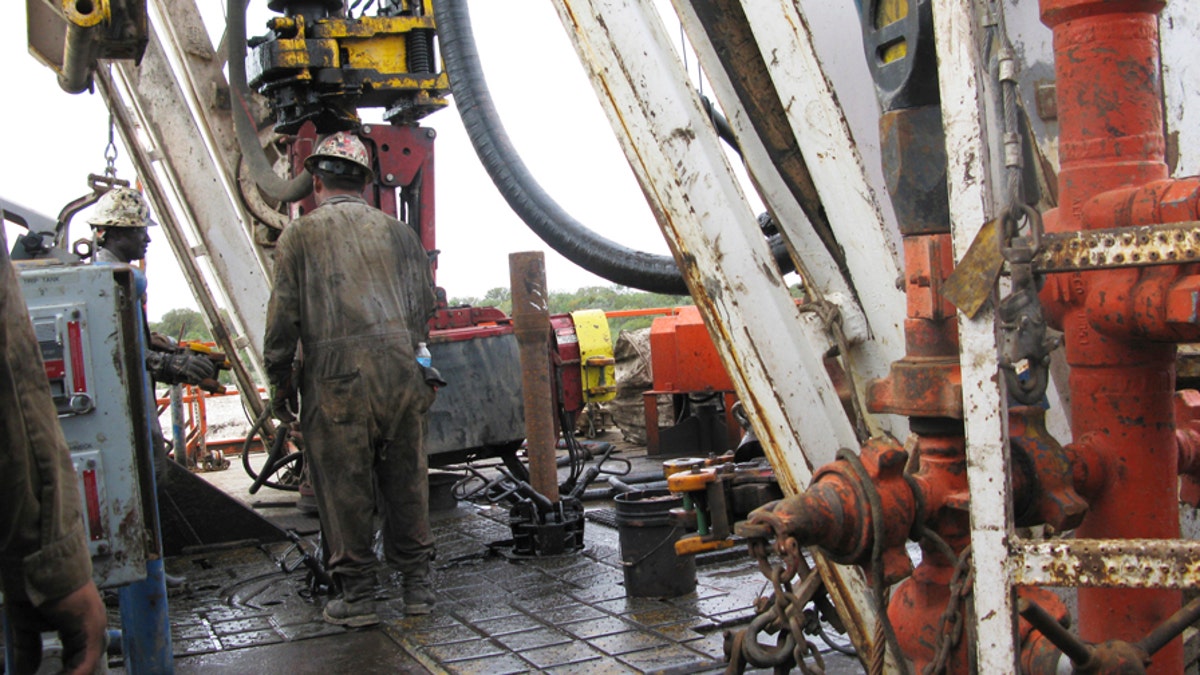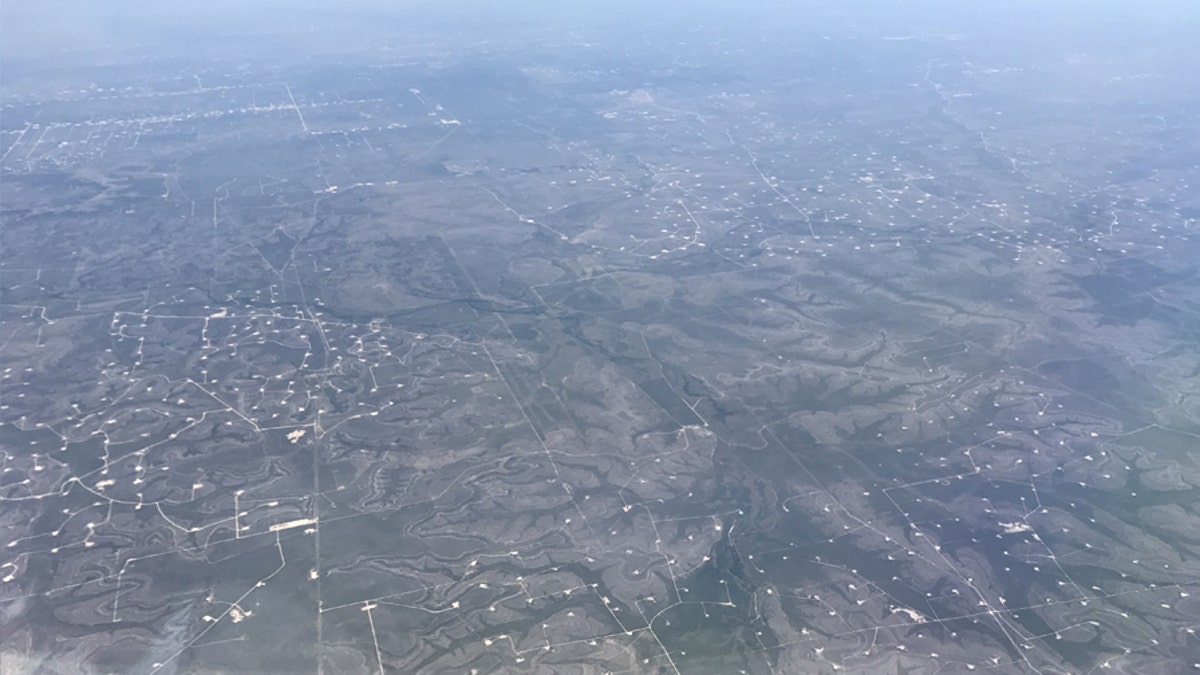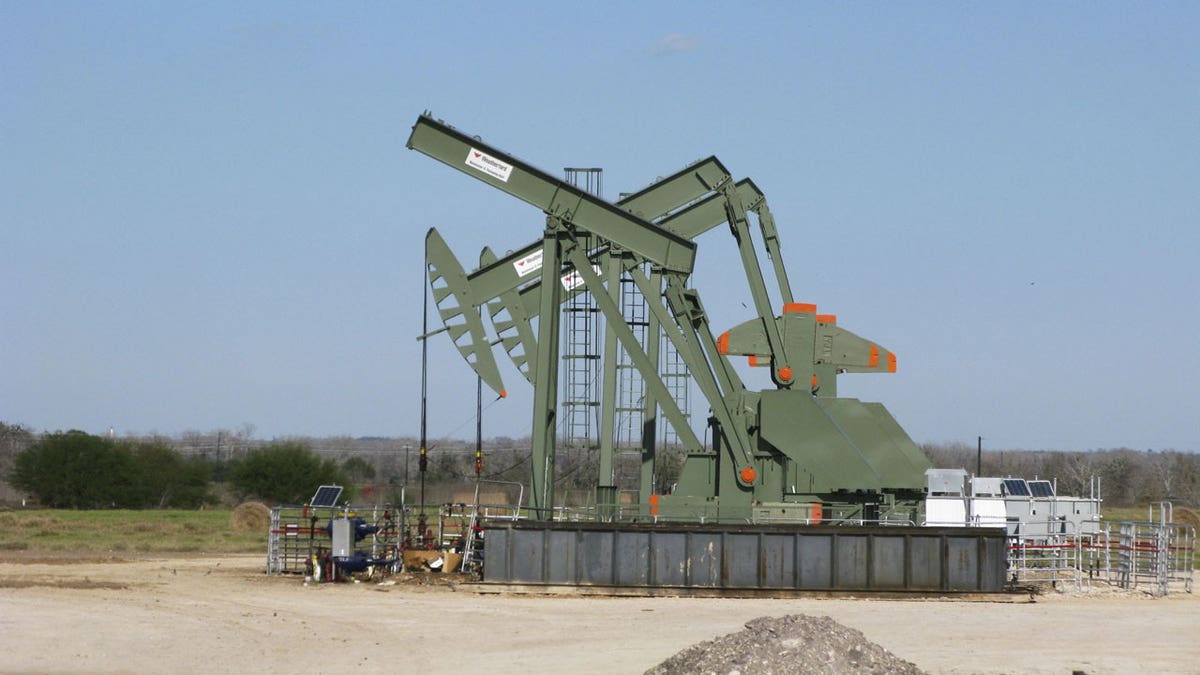MIDLAND, TEXAS – In the dusty heart of West Texas, rows of tall white wind turbines and rust-colored working pump jacks bob up and down along the vast rugged landscape.
It’s a visual juggernaut but make no mistake – this is shale country and in this part of the Lone Star State, legends are born and billions are made every single day.
Take Texas natives Cody Campbell and John Sellers, for example. They met in the seventh grade, played football together at Canyon High School and ended up at Texas Tech University.

Cody Campbell had a brief stint with the NFL's Indianapolis Colts before starting a career in the oil business (Getty Images)
Campbell went on to the NFL, playing as an offensive guard with the Indianapolis Colts while Sellers made money in real estate.
In 2009, the two friends started Double Eagle Energy Holding, where they signed lucrative land deals on the hoods of their pickups and lived lease-to-lease.
“It was a crazy, very humble starting point for us,” Sellers said. “We were the lowest form of oil guys.”
'It was a crazy, very humble starting point for us.'
Six years later, the one-time classmates had built their modest company into a multi-billion dollar behemoth and in 2017 sold 71,000 acres of Permian Basin rights for $2.8 billion. The deal secured both of their spots on the Richest Texans Under 40 list.

Oct. 19, 2013: Apache Corp worker drills a horizontal well in the Wolfcamp Shale in west Texas’ Permian Basin. (Reuters)
American oil legend Mark Papa helped start the U.S. shale boom in the 1990s. In the course of a decade, a $1 investment with him grew to $1,800. He tapped out when the market went bust but came out of retirement at the age of 70 when he saw opportunity in the Permian Basin. In two short years, Papa boosted the value of his new venture, Centennial Resource Development Inc., more than six-fold.
“We’ve got a history of wildcatters who came out and risked everything to try and build the industry,” Stacie Hanna, director of marketing and education at the Permian Basin Petroleum Museum, told Fox News. “We have people with that same kind of outlook and energy out here now.”
'We've got a history of wildcatters who came out and risked everything...'
Not only has Texas’ role as a petroleum powerhouse created colorful Horatio Alger-esque rags-to-riches stories but it’s also netted billions of dollars and created hundreds of jobs for the state.
Despite some skeptical analysts, the shale industry in the Permian Basin - a 300-mile stretch of open land from West Texas to southeast New Mexico - isn’t showing signs of slowing down.
The prospect of striking it rich is everywhere.
Like so many of the dreamer-turned-tycoon stories the area churns out, success at Permian wasn’t a given. It was born out of grit, determination and hard work. Making it big meant going all in on an area that was a relative latecomer to the shale revolution.

Tracy Sellers, John Sellers, Tara Campbell, and Cody Campbell at a Texas Tech football game (John Sellers)
Instead, early success stories belonged to the Barnett Shale formation in the northeastern part of the state. The area was first fracked by pioneer George Mitchell in the early 1990s.
Mitchell put the spotlight on Barnett and the Marcellus Formation in Pennsylvania, and both were largely considered “hot spots” on the shale map. Production in the Permian, by contrast, was just in its infancy.
Permian’s big break came after a handful of oilmen figured out how to crack open shale and find oil. By 2013, Permian was on the top of everyone’s list. Since then, the basin has been at the epicenter of the U.S. shale revival and has become one of the country’s most vital energy producing regions.
Advances in directional drilling and hydraulic fracturing – a method of recovering oil and gas from underground shale deposits – have enabled oil companies to dig even deeper into the ground.
It’s also helped the country wean itself from coal and has “reduced emissions dramatically along the way,” Michael E. Webber, deputy director of the Energy Institute at The University of Texas at Austin, said.
In the past five years, output from the Permian has doubled to 2.5 million barrels a day, making it among the most prolific oil and gas producing regions in the nation. The next five years could be even more profitable.

Aerial view of oil wells seen near Midland, Texas, U.S., May 2, 2017. Picture taken May 2, 2017. REUTERS/Ernest Scheyder - RC1366764970
“Texas is far from tapped out,” Scott Tinker, director of the Bureau of Economic Geology at the University of Texas at Austin, told Fox News. “Oil and natural gas are limited not so much by supply, but rather by the dynamics of demand, price, technology, public acceptance, energy alternatives at scale, and politics.”
But it isn’t always that easy. Shale has its own set of market-based problems and the industry has gone through its fair share of rough patches.
“We’re used to the ups and downs,” Hanna said. “They're tough, man. They’re really tough. They always have been.”
Still, while other shale patches have petered out, Permian keeps on going. It’s naturally gifted with thick bands of the mudstones that are up to 15 times the diameter of similar patches across the country.
According to an October drilling productivity report by the U.S. Energy Information Administration, U.S. oil output is expected to increase by 82,000 barrels per day to 6.12 million bpd.
Production at both of Texas’ massive shale oil plays – the Permian Basin and Eagle Ford – are expected to jump. The report predicts oil from Eagle Ford will increase by 2,500 bpd to 1.2 million and forecasts production in the Permian rising by 50,000 bpd to 2.7 million bpd – a new record.

Jan. 13,2016: A pump jack in Eagle Ford. (Reuters)
“Here we go again,” Dallas native Lisa Westin, whose family has been in the oil business for decades, told Fox News. “We’re ready for it. Whatever happens, Texas and its people are tough and we know how to handle the ups and downs.”

